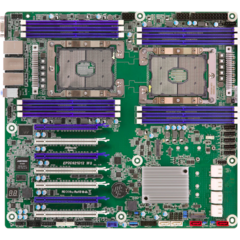Do CPU Chipset Drivers need to be reinstalled after a clean Windows install?
Windows may install WHQL versions of the drivers but those can be outdated by several months, and in some cases miss some features that improve performance.
So installing the latest version of the chipset drivers (from AMD or Intel site, not the motherboard maker's website, because the motherboard maker may be lazy and not update the downloads page to put the latest chipset drivers as AMD or Intel releases them) makes sense.
One observation Avoid "alpha" versions or "experimental" versions for drivers unless the description says it update may fix some problems similar to yours - often such versions exist for video cards to provide temporary or fairly untested fixes for newly released games, but can break or give you lower performance in other games or applications.



















Create an account or sign in to comment
You need to be a member in order to leave a comment
Create an account
Sign up for a new account in our community. It's easy!
Register a new accountSign in
Already have an account? Sign in here.
Sign In Now